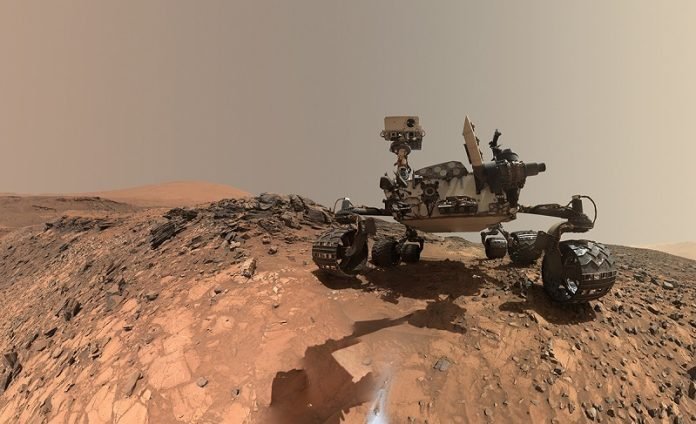
Planetary scientists have an answer to a mystery that’s puzzled the Mars research community since NASA’s Curiosity rover discovered a mineral called tridymite in Gale Crater in 2016.
Tridymite is a high-temperature, low-pressure form of quartz that is extremely rare on Earth, and it wasn’t immediately clear how a concentrated chunk of it ended up in the crater.
Gale Crater was chosen as Curiosity’s landing site due to the likelihood that it once held liquid water, and Curiosity found evidence that confirmed Gale Crater was a lake as recently as 1 billion years ago.
“The discovery of tridymite in a mudstone in Gale Crater is one of the most surprising observations that the Curiosity rover has made in 10 years of exploring Mars,” said Rice’s Kirsten Siebach, co-author of a study published in Earth and Planetary Science Letters.
“Tridymite is usually associated with quartz-forming, explosive, evolved volcanic systems on Earth, but we found it in the bottom of an ancient lake on Mars, where most of the volcanoes are very primitive.”
Siebach, an assistant professor in Rice’s Department of Earth, Environmental and Planetary Sciences, is a mission specialist on NASA’s Curiosity team.
To suss out the answer to the mystery, she partnered with two postdoctoral researchers in her Rice research group, Valerie Payré and Michael Thorpe, NASA’s Elizabeth Rampe and Caltech’s Paula Antoshechkina.
Payré, the study’s lead author, is now at Northern Arizona University and preparing to join the faculty of the University of Iowa in the fall.
Siebach and colleagues began by reevaluating data from every reported find of tridymite on Earth. They also reviewed volcanic materials from models of Mars volcanism and reexamined sedimentary evidence from the Gale Crater lake.
They then came up with a new scenario that matched all the evidence: Martian magma sat for longer than usual in a chamber below a volcano, undergoing a process of partial cooling called fractional crystallization that concentrated silicon.
In a massive eruption, the volcano spewed ash containing the extra silicon in the form of tridymite into the Gale Crater lake and surrounding rivers. Water helped break down the ash through natural processes of chemical weathering, and water also helped sort the minerals produced by weathering.
The scenario would have concentrated tridymite, producing minerals consistent with the 2016 find. It would also explain other geochemical evidence Curiosity found in the sample, including opaline silicates and reduced concentrations of aluminum oxide.
“It’s actually a straightforward evolution of other volcanic rocks we found in the crater,” Siebach said.
“We argue that because we only saw this mineral once, and it was highly concentrated in a single layer, the volcano probably erupted at the same time the lake was there. Although the specific sample we analyzed was not exclusively volcanic ash, it was ash that had been weathered and sorted by water.”
If a volcanic eruption like the one in the scenario did occur when Gale Crater contained a lake, it would mean explosive volcanism occurred more than 3 billion years ago, while Mars was transitioning from a wetter and perhaps warmer world to the dry and barren planet it is today.
“There’s ample evidence of basaltic volcanic eruptions on Mars, but this is a more evolved chemistry,” she said.
“This work suggests that Mars may have a more complex and intriguing volcanic history than we would have imagined before Curiosity.”
The Curiosity rover is still active, and NASA is preparing to celebrate the 10th anniversary of its landing next month.



